Summary Overview
Hydrocolloids Market Overview:
The global hydrocolloids market is expanding steadily, propelled by increasing demand in industries that include food and beverage, pharmaceuticals, cosmetics, and personal care. This market contains a variety of hydrocolloid forms, including gellant gum, guar gum, xanthan gum, and agar-agar, each with a distinct functional purpose in diverse applications. Our paper delves deeply into procurement trends, concentrating on cost-cutting techniques and the growing use of digital tools to optimize manufacturing and distribution operations.
Key problems in hydrocolloid procurement will involve managing fluctuating raw material costs, assuring product quality and uniformity, maintaining supply chain stability, and adhering to regulatory norms. The use of sophisticated procurement technology, like streamlined sourcing and digital systems for inventory control, will be crucial for businesses looking to optimize operations and maintain a competitive advantage in the marketplace. As global demand rises, firms are increasingly turning to market intelligence to improve efficiency and reduce risks, positioning themselves for long-term prosperity in the developing hydrocolloids sector.
Market Size: The global Hydrocolloids market is projected to reach USD 21.42 billion by 2035, growing at a CAGR of approximately 4.9% from 2025 to 2035.
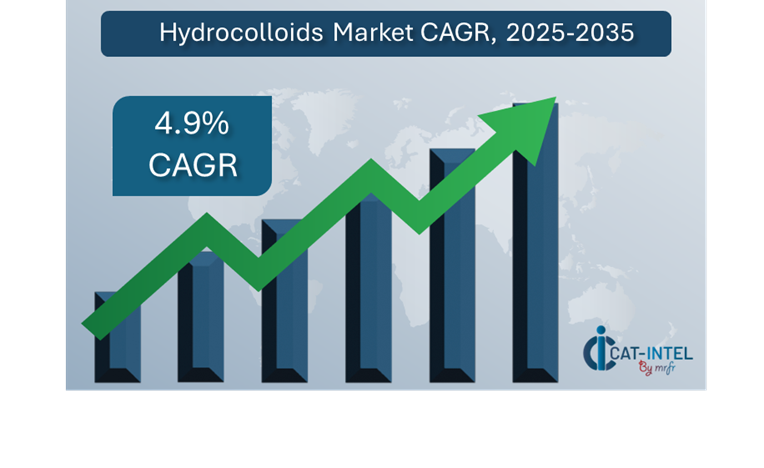
-
Sector Contributions: Growth in the market is driven by: -
Manufacturing and Supply Chain Optimization: allowing producers in the hydrocolloids industry to streamline processes, increase production efficiency, and maintain consistent product quality.
-
Retail and E-commerce Growth: Increased the need for better inventory management and demand forecasting, which is critical for hydrocolloids enterprises to remain competitive and responsive.
-
Technological Transformation: Advancements in AI, machine learning, and automation technologies are increasing hydrocolloid manufacturers' capacities and optimizing operations, resulting in long-term growth in the industry.
-
Innovations: Enable enterprises in the hydrocolloids market to focus on specific products or processes that are adapted to their needs, lowering costs and increasing manufacturing flexibility.
-
Investment Initiatives: Companies in the hydrocolloids market are investing in digital technologies, such as cloud-based systems, to minimize infrastructure costs, improve supply chain visibility, and increase overall business agility.
-
Regional Insights: Asia Pacific and North America continue to be important contributors to the worldwide hydrocolloids market due to sophisticated digital infrastructure, increased demand for processed food products,
Key Trends and Sustainability Outlook:
-
Cloud Integration: More businesses are turning to cloud-based technologies to improve scalability, reduce costs, and simplify access to crucial data, resulting in a more agile and accessible supply chain.
-
Advanced Features: Integration of modern innovations such as AI, IoT, and blockchain. is enhancing decision-making, automating production, and improving transparency in the hydrocolloids industry.
-
Focus on Sustainability: Manufacturers are progressively using modern technologies and procedures to manage resources more efficiently, decrease waste, and achieve environmental goals through improved tracking and reporting systems.
-
Customization Trends: Businesses in the food, cosmetics, and pharmaceutical industries desire bespoke hydrocolloid formulations and products that satisfy their specific requirements and regulatory criteria. -
Data-Driven Insights: Hydrocolloid manufacturers are using advanced analytics to predict trends, optimize inventories, and measure production performance, delivering significant insights.
Growth Drivers:
-
Digital Transformation: As digital technologies become more widely used across businesses, there is a growing desire for more efficient and effective hydrocolloid production processes.
-
Demand for Process Automation: Manufacturers are increasingly resorting to automation technology to eliminate manual labour, reduce errors, and accelerate manufacturing processes.
-
Scalability Requirements: With rising market demand, firms are looking for scalable production systems that can handle higher volumes and changing product specifications without sacrificing quality or efficiency.
-
Regulatory Compliance: Hydrocolloid makers use digital technologies to ensure compliance, automate reporting, and maintain process accuracy. -
Globalization: Increased demand for hydrocolloid solutions that offer multi-regional applications, including multi-currency and multi-language capabilities, which is fuelling market expansion.
Overview of Market Intelligence Services for the Hydrocolloids Market:
Recent evaluations of the hydrocolloids market have identified numerous major difficulties, including increased raw material costs and the requirement for tailored formulations. Market intelligence studies provide significant data that help businesses identify procurement opportunities, optimize supplier relationships, and manage costs effectively. These insights also assist organizations in complying with industry laws, maintaining high-quality manufacturing processes, and ensuring consistent product availability.
Procurement Intelligence for Hydrocolloids: Category Management and Strategic Sourcing.
To remain competitive in the hydrocolloids industry, businesses are improving their procurement strategies through detailed expenditure monitoring and supplier performance tracking. Effective category management and strategic sourcing are critical for decreasing procurement costs and ensuring a consistent supply of high-quality hydrocolloid components. Businesses that use actionable market knowledge can improve their sourcing strategy, negotiate better terms with suppliers, and boost their market position.
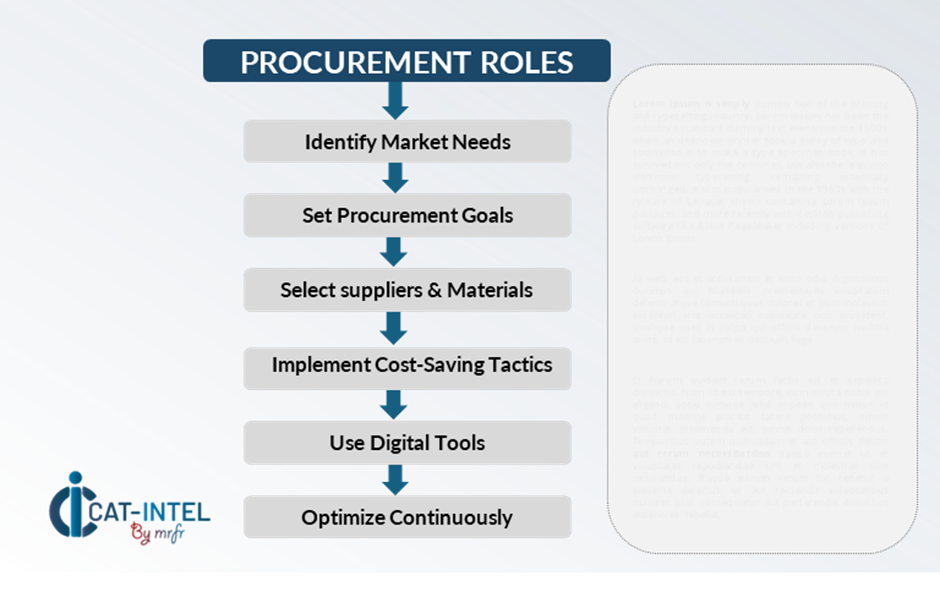
Pricing Outlook for Hydrocolloids: Spend Analysis
The pricing prognosis for hydrocolloids is projected to be moderately volatile, affected by a number of major factors. Significant drivers include technical developments, desire for sustainable sourcing, customized requirements, and regional pricing variances. Furthermore, the increasing deployment of automation and digital tracking systems, together with heightened worries about regulatory compliance and product quality, is leading to upward pricing pressures within the hydrocolloids market.
Graph shows general upward trend pricing for Hydrocolloids and growing demand. However, there may be fluctuations influenced by economic conditions, technological advancements, and competitive dynamic.
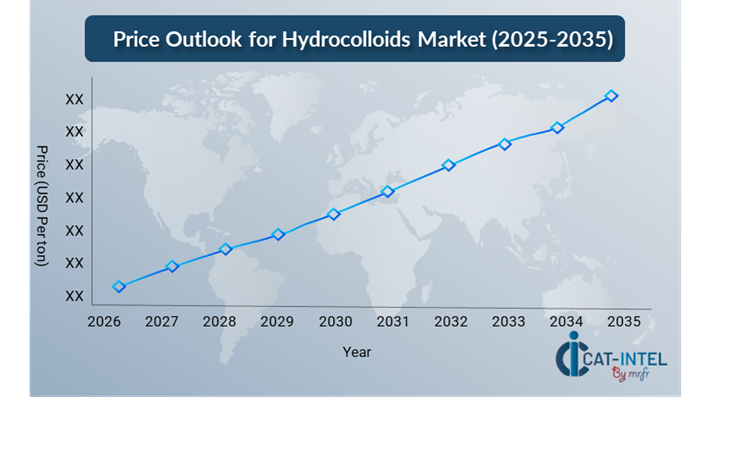
Efforts to optimize procurement procedures, strengthen supplier relationships, and use flexible sourcing techniques are critical for cost management. The use of digital tools for market monitoring, data analytics for price forecasting, and contract management simplification can all help to reduce costs when acquiring hydrocolloid substances.
Collaborating with dependable suppliers, negotiating long-term contracts, and investigating flexible pricing structures, such as volume-based or subscription pricing, are all critical tactics for controlling hydrocolloid procurement costs. Regardless of these hurdles, concentrating on scalability, establishing seamless production integration, and implementing sustainable sourcing techniques will be critical to sustaining cost-effectiveness and long-term operational success in the hydrocolloids market.
Cost Breakdown for Hydrocolloids: Total Cost of Ownership (TCO) and Cost-Saving Opportunities
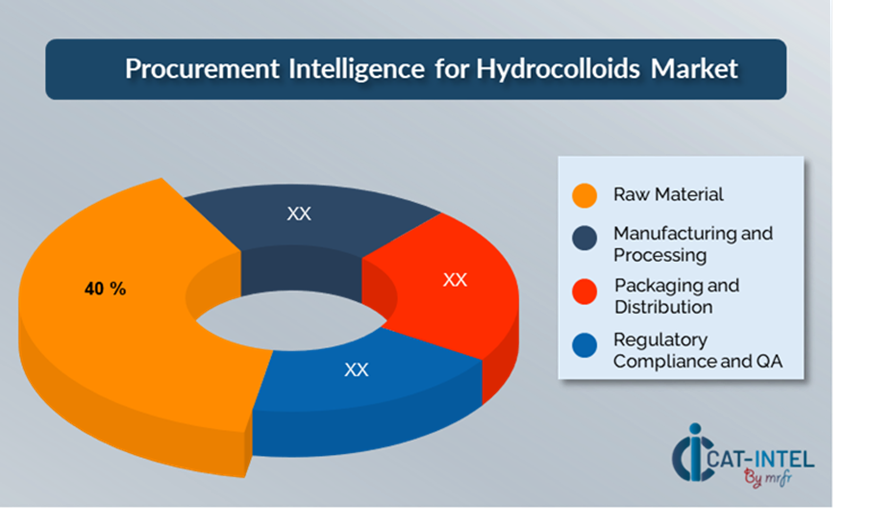
- Raw Material (40%)
-
Description: These components, which include natural sources such as seaweed, guar beans, and other plant-based substances, are required for hydrocolloid production.
-
Trend Point: As the demand for natural, clean-label, and plant-based products grows, raw material sourcing costs fluctuate due to environmental considerations, supply chain interruptions, and geographical availability.
- Manufacturing and Processing: (XX%)
- Packaging and Distribution (XX%)
- Regulatory Compliance and QA: (XX%)
Cost-Saving Opportunities: Negotiation Levers and Purchasing Negotiation Strategies
In the hydrocolloids sector, streamlining procurement processes and using strategic negotiation strategies can result in significant cost savings and increased operational efficiency. Long-term collaborations with dependable suppliers, particularly those that provide sustainable and adaptable ingredient solutions, can result in more beneficial pricing structures, such as volume-based discounts and bundled products. Flexible pricing methods, such as tiered pricing or long-term contracts, allow you to lock in cheaper rates while protecting against price swings over time.
Collaborating with hydrocolloid suppliers who prioritize innovation and scalability provides additional benefits, such as access to cutting-edge production techniques, automation, and customized formulations, resulting in cheaper long-term operational expenses. Integrating digital solutions such as supplier performance management systems and usage analytics improves transparency, eliminates waste, and ensures the most efficient use of hydrocolloid components. Diversifying vendor options and implementing a multi-vendor strategy can help manage risks including supply chain interruptions, service failures, and reliance on a single supplier.

Supply and Demand Overview for Hydrocolloids: Demand-Supply Dynamics and Buyer Intelligence for Effective Supplier Relationship Management (SRM)
The hydrocolloids market is steadily expanding, driven by increased demand in a variety of industries, including food and beverage, pharmaceuticals, cosmetics, and healthcare. Technological breakthroughs, industry-specific needs, and global economic situations all have an impact on supply-and-demand dynamics.
Demand Factors:
-
Sustainability and Health Trends: Clean-label and plant-based hydrocolloids are becoming increasingly popular due to customer aspirations for healthier and more sustainable food items.
-
E-commerce and Retail Growth: The rise of online retail and food delivery services has increased the demand for hydrocolloids in processed foods, which provide uniformity and shelf-life extension.
-
Customization and Industry-Specific Solutions: Certain sectors, particularly the food and pharmaceutical industries, require hydrocolloid solutions that are suited to specific formulations, such as stabilizing agents, gelling agents, and thickening agents.
-
Food Product Innovation: The growing need for innovative food items such as dairy substitutes, functional beverages, and plant-based foods necessitates the development of tailored hydrocolloid formulations.
Supply Factors:
-
Technological Advancements: Improvements in processing methods and novel formulations are broadening the range of hydrocolloid choices available to producers, enhancing supplier competitiveness.
-
Vendor ecosystem: A rising variety of hydrocolloid providers, ranging from large-scale global players to niche makers, gives manufacturers a diverse choice of possibilities.
-
Global Economic Factors: Raw material price variations, trade barriers, and disruptions in the global supply chain all have an impact on the pricing and availability of hydrocolloid components. -
Scalability and Flexibility: Contemporary hydrocolloid solutions are growing more adaptable, allowing vendors to serve organizations of all sizes and manufacturing complexities.
Regional Demand-Supply Outlook: Hydrocolloids
The Image shows growing demand for Hydrocolloids in both Asia Pacific and North America, with potential price increases and increased Competition.
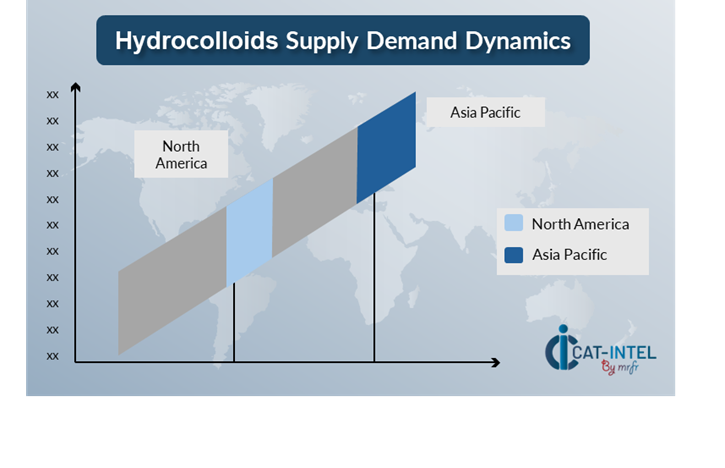
Asia Pacific: Dominance in the Hydrocolloids Market
Asia Pacific, particularly the East Asia, is a dominant force in the global Hydrocolloids market due to several key factors:
-
Significant Manufacturing Base: China, Japan, India, and South Korea have a significant production base and strong supply networks for hydrocolloids.
-
Cost-Effective Sourcing: The region offers a cost advantage due to the availability of raw materials like seaweed and guar beans, as well as the relatively cheap production costs.
-
Increasing Consumer Need: In Asia-Pacific, there is a growing need for functional foods, clean-label products, plant-based alternatives, and medications, all of which require hydrocolloid-based chemicals.
-
Innovative Product Development: The region has experienced a significant increase in hydrocolloid innovation, particularly with a greater emphasis on plant-based and sustainable alternatives. -
Strong sell Market: Many hydrocolloid suppliers in Asia-Pacific sell their goods internationally, particularly to North America and Europe.
Asia Pacific Remains a key hub Hydrocolloids Price Drivers Innovation and Growth.

Supplier Landscape: Supplier Negotiations and Strategies
The hydrocolloids market's supplier ecosystem is similarly varied and competitive, with a mix of global industry leaders and regional players influencing market dynamics. These vendors have a significant impact on critical parameters such ingredient pricing, product customisation, and supply chain stability. Large, well-established providers dominate the market, delivering a diverse range of hydrocolloid products to many industries, while smaller, niche suppliers focus on specific applications or unique offerings such as plant-based or sustainably derived hydrocolloids.
The hydrocolloid supplier ecosystem encompasses important production regions, with major global businesses leading the market and creative local providers catering to specific sector demands such as food and beverage, pharmaceuticals, and cosmetics. As businesses prioritize sustainability, innovation, and product differentiation, hydrocolloid suppliers are implementing more environmentally friendly production techniques, improving product functionality, and providing flexible solutions to suit the growing need for bespoke formulations.
Key Suppliers in the Hydrocolloids Market Include:
- Qingdao Bright Moon Seaweed
- Ingredion Incorporated
- DuPont
- Cargill, Inc.
- Tate & Lyle PLC
- CP Kelco
- Ashland Global Holdings Inc.
- Evonik Industries
- Fujian Fengrun Seaweed
- Gelymar
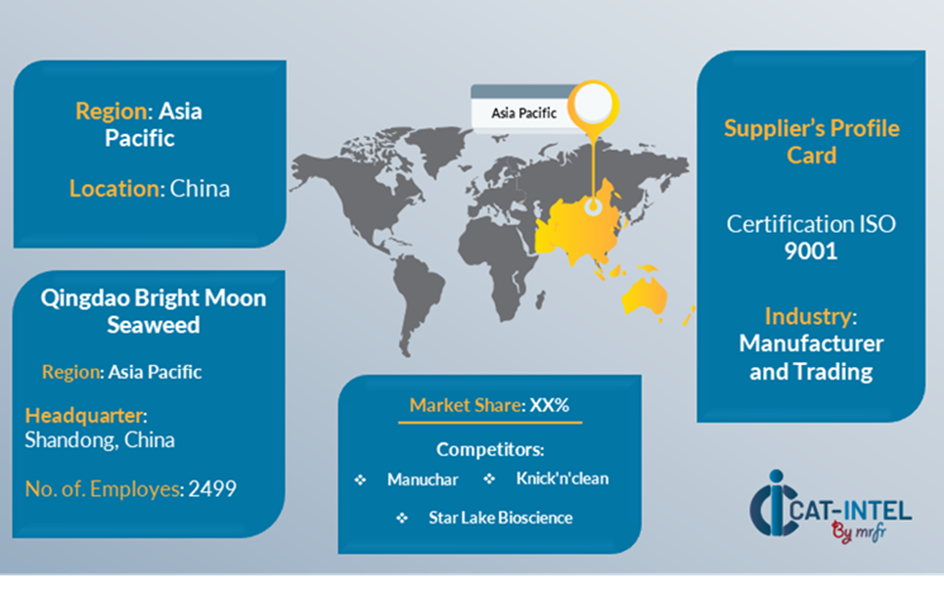
Key Developments Procurement Category Significant Development:
Significant Development |
Description |
Market Growth |
The hydrocolloids market is expanding rapidly due to increased demand for functional ingredients in sectors such as food and beverage, pharmaceuticals, cosmetics, and healthcare. |
Cloud Adoption |
Cloud-based systems provide higher scalability, cost efficiency, and real-time data access, allowing for better decision-making and increased operational flexibility. |
Product Innovation |
Suppliers are expanding their product offers with improved formulas specialized to certain industries, such as gelling agents for vegan food goods or stabilizers for customized beauty products. |
Technological Advancements |
Technological developments in hydrocolloid production processes, such as automation, machine learning, and IoT integration, are boosting supplier capacities and allowing for real-time inventory and supply chain monitoring, thereby increasing the hydrocolloid industry's overall agility. |
Global Trade Dynamics |
Changes in global trade rules, environmental laws, and regional economic situations have an impact on the hydrocolloids business, particularly in terms of sourcing and compliance. |
Customization Trends |
Modular hydrocolloid solutions that can be mixed with various other ingredients, along with the combination of hydrocolloid applications with new innovations in food manufacturing, are gaining popularity in industries such as health-conscious foods, plant-based products, and pharmaceuticals. |
|
Hydrocolloids Attribute/Metric |
Details |
Market Sizing |
The global Hydrocolloids market is projected to reach USD 21.42 billion by 2035, growing at a CAGR of approximately 4.9% from 2025 to 2035.
|
Hydrocolloids Technology Adoption Rate |
Around 60% of enterprises in the food, beverage, and pharmaceutical industries use hydrocolloid-based solutions, with a growing interest in plant-based and sustainable hydrocolloid alternatives. |
Top Hydrocolloids Industry Strategies for 2025 |
Key strategies include focusing on clean-label and sustainable product developments, using plant-based and functional hydrocolloids, improving supply chain transparency, and expanding factory automation to increase efficiency. |
Hydrocolloids Process Automation |
Approximately 45% of hydrocolloid manufacturers use automation in production to optimize operations such as mixing, gelling, and packaging, increasing efficiency and lowering human error. |
Hydrocolloids Process Challenges |
Major issues include raw material price volatility, supply chain disruptions, regulatory compliance, and maintaining consistent quality across multiple applications. |
Key Suppliers |
Leading hydrocolloid suppliers include Qingdao Bright Moon Seaweed, Ingredion Incorporated and DuPont, which provide a diverse range of solutions for the food, beverage, pharmaceutical, and personal care industries. |
Key Regions Covered |
Asia Pacific, North America and Europe are key regions for hydrocolloid adoption, with substantial demand in the food and beverage, cosmetics, and pharmaceutical industries. |
Market Drivers and Trends |
Growth is being driven by rising demand for functional foods, the popularity of plant-based diets, increased consumer awareness of clean-label ingredients, and breakthroughs in hydrocolloid formulations for novel applications. |

